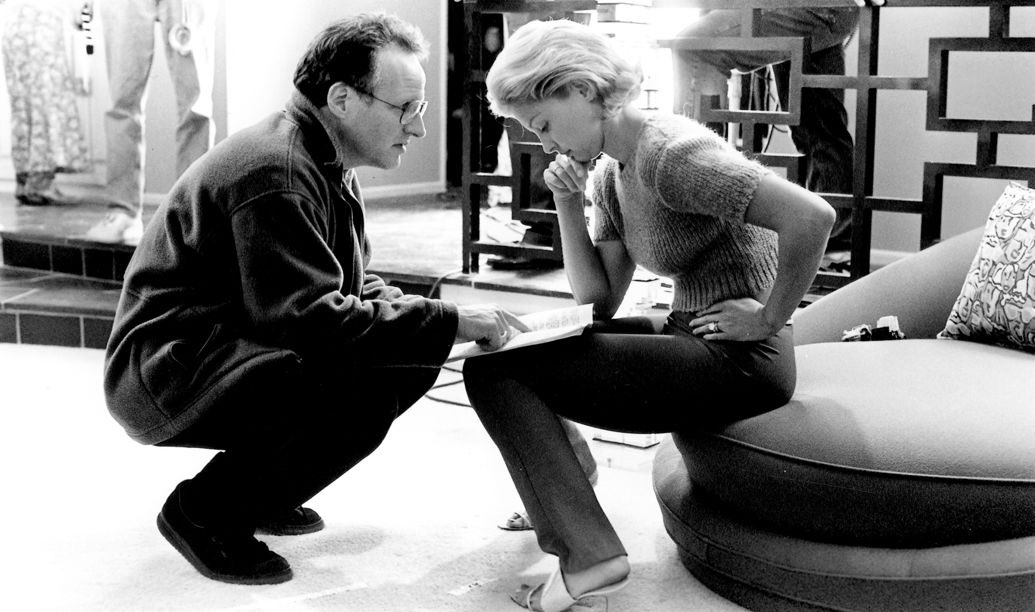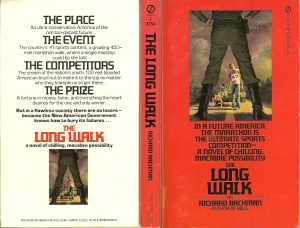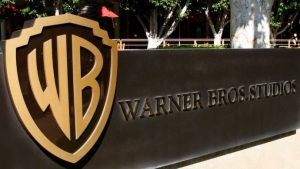
Introduction
The film Heat was released on December 15, 1995. As director Michael Mann’s fifth feature film, it carried with it quite a sizable amount of heat of its own, so to speak. For more than four decades Mann has been at the forefront of the stylistic crime/drama genre. Dating back to his feature film debut Thief, released in 1981, Mann has been all about style, and details, as well as a blunt and straightforward way of telling a story and portraying characters. The director is committed to pre-production research and getting every little detail accurate. Subsequently, Heat may be Mann’s sleekest and most polished work in a long and celebrated career.
Heat featured an impressive ensemble cast that included Val Kilmer, Tom Sizemore, Jon Voight, Ashley Judd, and Amy Brenneman, among others. In addition, the film also delivered the goods via the first onscreen screen pairing between screen legends and close friends, Al Pacino and Robert De Niro. The glossy and cool-looking cinematography in Heat by Dante Spinotti has led to a slew of films in the ensuing twenty-eight years that pay homage to this classic. Among them are Collateral (2004), The Town (2010), and the now cult-classic Den of Thieves (2018).
Mann is not known for writing novels or creating sequels (Miami Vice notwithstanding). However, the director has recently published the novel Heat 2, written with Meg Gardiner. The book focuses on Chris Shiherlis (Val Kilmer), one of the few criminals to survive Mann’s original film. Picking up right where Heat leaves off, Chris attempts to escape LA, heading for Paraguay. In addition, there’s also a flashback section of the novel, focusing on the original characters in Heat. In honor of the release of Heat 2, Cinema Scholars presents to you an oral history of the making of Heat, as told by the people who made it.

Beginnings
In 1963, Charles Adamson, a detective for the Chicago police department, sat in a Chicago coffee shop with a convicted bank robber, and former Alcatraz inmate, Neil McCauley. Their back-and-forth dialogue, and McCauley’s eventual takedown by Adamson in 1964, would be the impetus for Heat, a screenplay that Michael Mann wrote in 1979. Moreover, it would take the director more than fifteen years to finally see his vision brought to the big screen.
Michael Mann spoke with Deadline in 2015 about meeting with Detective, and friend, Charlie Adamson in a Deli in Chicago. This is where the seed for Heat was planted:
“My late friend, Charlie Adamson, killed the real Neil McCauley in 1963. Fundamentally, the whole idea for the movie…sometimes these things just occur to you in a flash. The idea to do this movie came when Charlie was telling me about sitting down with Neil McCauley and they had this conversation and how much rapport there was between them. That was because there was tremendous respect, which wouldn’t interfere with Charlie blowing this guy out of his socks at the drop of a hat if he caught him coming out of a score…When I heard the story and the exchange they had, that became the whole core idea of the movie, it was at the Belden Deli on Lincoln Avenue in Chicago.
Adamson served on the police force until 1974. Afterward, he went on to become a successful screenwriter and television producer. Most notably, he was a frequent collaborator with Michael Mann. The pair would work together in some capacity on a variety of projects. This included Thief in 1981, Miami Vice in 1984, Crime Story in 1986, and, of course, Heat in 1995. Adamson passed away from lung cancer in 2008 at the age of 71. The ending credits of Mann’s Public Enemies (2009) honor his memory.

Charlie Adamson gave an interview in 2005, to be included in the tenth anniversary DVD “special edition” release of Heat. He discusses how he first met Michael Mann in Chicago and his final words with Neil McCauley:
“Michael and I had a mutual friend in Chicago whose name was Nate Grossman. He said that he had a friend of his that wanted to do law enforcement, police genre stuff. Here I am a cop, wanting to be a writer, and Nate thought, wow, I gotta put these two guys together…Neil McCauley was 49 years old the day we met and he had already served 25 years in the penitentiary. Of that 25, 8 of it was on Alcatraz…I remember the very last thing I said to him was, ‘I’m sure we’ll meet again.’ And I said to myself, ‘I wonder where this is gonna lead us?’”
L.A Takedown
L.A. Takedown (1989) was a failed pilot for NBC television. Written and directed by Michael Mann, the cast included Scott Plank as detective Vincent Hanna, who was hunting down career criminal Patrick McLaren, portrayed by Alex McArthur. Michael Rooker, Daniel Baldwin, and Xander Berkeley all had supporting roles. The film was eventually retooled as a standalone TV film. Based on the criminal life of Neil McCauley, L.A. Takedown is the basis for Heat.
Watching L.A. Takedown, it’s clear the seed has been planted for what would come later. The film moves at a brisk pace and has a sense of flash and style that is a signature of Mann’s work. However, being forced to adapt his own source material for a 90-minute made-for-TV film affects the end product. In fact, Mann cut over 100 pages of his original Heat draft for the NBC movie and it shows. As a result, the film has a loose narrative and feels rushed and confusing.

Actor Michael Rooker spoke with Toro Magazine in 2007 to discuss working with Michael Mann on ‘L.A. Takedown’ and not being asked to reprise his role in Heat:
“…You know that was a case where from the studio’s standpoint, they didn’t want any actors from the original. I was wondering why I wasn’t even able to see Michael. I couldn’t get an audition for Heat. And then I got the script and realized why. It was the same exact script, word for word, as the TV version. So, I was like, “OK I get it now. He doesn’t want anyone to know that it was a TV pilot and a failed one at that.” So I don’t blame him for trying to keep it under wraps…I would have loved to work with Michael again on that. Was it something I said? No, it was something I’d done. I was in the original. So nope, couldn’t do it…”
Casting Heat
Achieving commercial and critical success with The Last of the Mohicans (1992), Mann now had the juice, after fifteen years, to finally get his version of Heat made. Of course, part of that juice included being able to cast screen legends Robert De Niro and Al Pacino as the leads. This would be the lifelong friends’ first onscreen appearance together. Mann revisited his 1986 draft of Heat, fleshed out the story, and expanded the characters.
Mann first sent the script to De Niro. Consequently, the actor immediately showed it to Pacino, whom De Niro thought would be perfect for the role of Detective Vincent Hanna. The chance to play adversaries in a Michael Mann-directed crime drama/heist film was too good for either actor to pass up. It should be noted that Pacino stated that he viewed Hanna as having been under the influence of cocaine throughout the film. This would explain a lot of things with regard to Pacino’s now legendary over-the-top performance.

Al Pacino spoke to Christopher Nolan at a Heat reunion panel in Beverly Hills in 2016. Presented by the Academy of Motion Picture Arts & Sciences, Pacino explained his character’s motivation:
“And also, the character, I don’t know if this has gotten out much. I don’t know if I’ve ever said it! I may be breaking the law now! But I’ll say it. The character I played, he’s a guy, he’s been around, he’s done a lot of stuff, and he also chips cocaine. And I always thought that was a choice we made, but yet not showing it…I’ve always wanted to say something, just so you know where some of the behavior’s coming from! Okay? I’ve never thought I would have the opportunity to say this!”
Originally, Keanu Reeves had been offered the role of Chris Shiherlis, McCauley’s right-hand man, and protege. Reeves turned down the part so that he could portray Hamlet at the Royal Manitoba Theatre Centre. Subsequently, Val Kilmer, who was finishing up production on Batman Forever (1995) was given the pivotal role. Additionally, Tom Sizemore, Diane Venora, Amy Brenneman, Ashley Role, West Studi, Ted Levine, Jon Voight, Natalie Portman, William Fichtner, Kevin Gage, and Tom Noonan all have important supporting roles in this absolutely loaded cast.
Val Kilmer hosted a Reddit AMA (Ask Me Anything) in 2017 and discussed his utter joy in working with Michael Mann and the incredible cast of Heat:
“Well, imagine being able to say, “Al and Bob” for the rest of your life. Not many people can do that. I have seen Bob, giggling like a school girl in a van in the middle of the night, because we have to be quiet cause they are filming outside…I have been hugged by Al Pacino in the middle of downtown LA like he was my older brother. I have shot live rounds from high-powered assault weapons over Bob’s head while rehearsing lines from our film. I got to kiss Ashley Judd…I sometimes lived at Michael Mann’s house. I am in one of the greatest cops and robbers films in film history…What an honor! Priceless experience. Watching all the actors do their thing…loved every minute of it.”

Filming Locations
Los Angeles, throughout its history, has had its fair share of, often deadly, bank robberies. This peaked in the early 1990s with an astonishing 2,000+ robberies in the region. As a result, the heists rose in real life, and film studios took note, trying to incorporate this into their latest productions. The ‘bank robbery capital of the world’ churned out such films as Die Hard(1988), Point Break (1991), Reservoir Dogs (1992), The Usual Suspects (1995), and Set It Off (1996). However, it may be Heatthat best incorporates Los Angeles into the narrative.
Much like the films of Quentin Tarantino, the Los Angeles locale is an essential part of Heat. Much of this is a result of the work put in by location scout Lori Balton. In addition, Balton, coincidently, worked with Tarantino on Once Upon A Time…In Hollywood (2019), one of the most Los Angeles-centric films made in recent memory.
The St. Mary Medical Center in Long Beach. The Sixth Street residence of Hanna’s wife in Santa Monica. Bob’s Big Boy Broiler restaurant in Downey. The rail yard and chop shop in Wilmington. The Centinela Drive-In near Fox Hills. Kate Mantilini located on Wilshire Boulevard and the Los Angeles International Airport in El Segundo. All of these locations that Balton scouted out helped shape the look and distinct feel of Heat. Balton’s ability to know exactly what Mann was looking for was essential in Heatlooking the way it did.

Location Scout Lori Balton spoke with L.A. Taco in 2019 about working closely with Michael Mann on Heat and knowing exactly what the director was looking for:
“…sometimes it’s not the actual location, but rather the story and leg work that went into what finally ended up on the screen…He [Mann] didn’t sit down and teach me, but by what [locations] he refused, by what he rejected, by what he liked, by what his comments were, he taught me how to do my job…You had to really have great respect for the work and the process because if you didn’t, you weren’t going to find anything special enough for [Michael]. By ‘special enough’ I don’t mean necessarily, Ooo, look at that. You could just be talking about the fact that he needed a certain perspective on a road or something, but it was very particular…Just this whole idea of having to shoot in South Central as opposed to adding some graffiti and razor wire to something in Santa Monica…”
Release
Released on December 15, 1995, Heat grossed $8.4 million on its opening weekend. It went on to be a box-office success, grossing almost $190 million globally on a $60 million budget. While it wasn’t a massive hit, there’s no excuse as to why the film was ignored at the 68th annual Academy Awards. In Oscar history, it’s an all-time great snub, ranking alongside Goodfellas (1990) and Pulp Fiction (1994). Comparatively, Pulp Fiction won Tarantino his first Oscar for screenwriting. Joe Pesci won a supporting Oscar for Goodfellas. Heat was completely shut out.
In a year that saw Tim Roth nominated for Rob Roy (Best Supporting Actor) not to mention Richard Dreyfuss for Mr. Holland’s Opus (Best Actor nominee), Heat received nothing. Was it that De Niro and Pacino canceled each other out in the eyes of Academy voters? How could Mann’s direction be overlooked? How could the exquisite cinematography and fantastical sound be ignored by the Academy? It’s still a question that begs to be answered almost thirty years later.
There is little doubt that Heat is one of the great LA films. Equally important, the film used almost 100 locations around the area. Many viewers had never seen these unique and often visceral-looking parts of LA. While not a ‘love letter’ to the City, per se, there is no reason this film should have been ignored the way it was by the Academy. The editing alone is stunning. Additionally, the minimalist score by Elliot Goldenthal should also have been recognized.

Michael Mann spoke with Rolling Stone in 2015 about the deeper meaning of Heat, its contradictions, and why people are still talking about the film all these years later:
“Obviously, we all cared about the film a lot. I cared about it a lot, and it has a lot of layers of meaning…Sometimes when you’re very intentionally and strongly specific, that specificity achieves a certain universality. But there are contradictions that work on you in a film, where both things are true even though they’re oppositional to each other. For example, if you track the movie from a storytelling point of view, who are you supposed to empathize with at the end of the film? You want Bob to get away, and you want Al to get Bob. Both are true simultaneously, and the two fuse. There’s a fusion in the end of the two men in this perfect counterpoint. It’s not complicated, but it has complexity. It’s ordered in symmetry, and so the way that these stories are told and how these lives are opposed against each other is maybe why we’re still talking about Heat”
Legacy
Back in 1995, the buzz with regards to Heat was all about pitting Robert De Niro and Al Pacino against each other. It was all about their first on-screen pairing. That was, literally, all anyone was talking about leading up to the film’s release. Almost thirty years later, the narrative has changed significantly. Furthermore, the film’s impact has changed the crime/drama genre. It’s bleak and visceral cinematography. The incredible realism of the film’s action sequences. The self-reflection by the characters. All of these were game changers for a film of this genre.
Mann gave these seemingly one-dimensional bank robbers backstories that were filled with grief, love, anger, pain, and loneliness. By diving deep into the personal lives of his characters, Mann was able to elicit sympathy for people we should not be sympathetic towards. This has been explored again and again in films and television shows of this nature in the ensuing years. Most notably in HBO’s True Detective. Director Christopher Nolan has stated that he was influenced by Heat when preparing to film The Dark Knight. Nolan even cast William Fichtner.

Perhaps part of it was luck. Much like a lot of the films of the mid-1990s, Heat was in the right place at the right time. Not to mention that Pacino was still in his post-prime, right before he became a caricature of himself. De Niro was also nearing the end of his subtle yet menacing phase. Val Kilmer was still at the peak of his powers. On top of that, Michael Mann pulled back the curtain of cops and robbers, showing that good cops were flawed, and that flawed criminals could exhibit goodness. Whether Heat is Mann’s greatest film is up for debate. However, there is no debate that it is his most rewatchable.
If You Enjoyed This Article We Recommend:
Scholars’ Spotlight: Val Kilmer – Part One (Click Here)
Scholars’ Spotlight: Val Kilmer – Part Two(Click Here)
The Los Angeles Homes of The Doors (Click Here)
If You Don’t Want To Miss Any Of Our Content In The Future Like Us On Facebook and Follow Us On Twitter and Instagram
The post HEAT (1995): A Cinema Scholars Oral History appeared first on Cinema Scholars.



